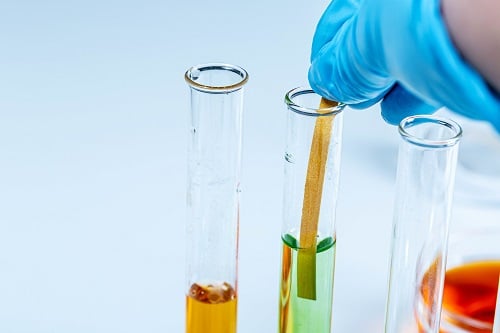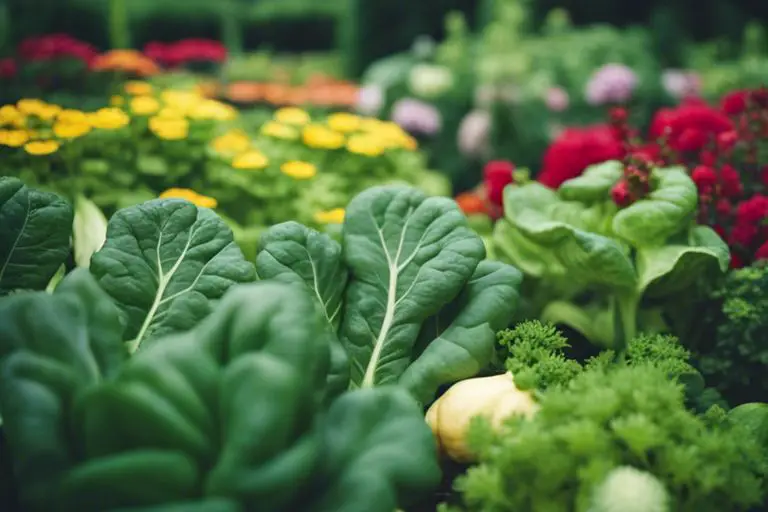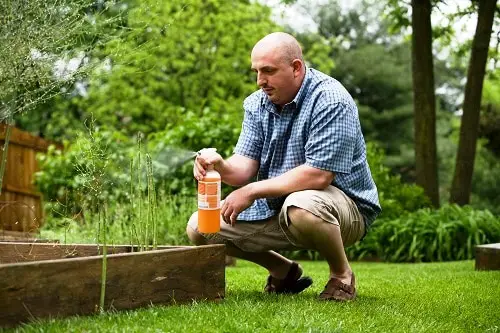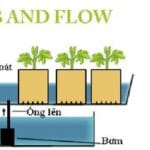The Ph level of water in hydroponically grown plants plays an essential role in the growth of the plants. The level of the pH decides whether it is acidic, alkaline, or neutral. They can affect the development of the plants if they are not balanced.
For hydroponics plants, checking the pH level is obligatory as they grow mainly on water and nutrition’s. The hydroponics pH keeps rising for most gardeners and they don’t know how to decrease it.
In this article, you will get to know the importance of pH in hydroponics and also how to decrease a high pH level.
Hydroponics Ph Keeps Rising
| Topic | Information |
|---|---|
| Causes of pH increase | Nutrient imbalances, inadequate water quality, evaporation, bacterial activity, high alkalinity in water, imbalanced nutrient solutions. |
| Effects of high pH | Reduced nutrient availability, nutrient deficiencies, inhibited plant growth, yellowing leaves, increased susceptibility to diseases and pests. |
| Prevention and control measures | Regular monitoring and adjustment of nutrient solution pH, using pH buffers, maintaining proper system hygiene, using appropriate water sources, avoiding imbalanced nutrient solutions, utilizing automatic pH dosing systems, monitoring and managing nutrient uptake rates. |
| Recommended pH range for plants | Typically falls between 5.5 to 6.5, but may vary depending on the specific plant species being grown in the hydroponic system. |
| Monitoring frequency | pH should be monitored and adjusted regularly, typically daily or at least several times a week, depending on the system size and plant requirements. |
| Natural remedies for lowering pH | Use of organic acids, such as citric acid, or acidic additives specifically designed for hydroponics, but caution should be exercised to avoid overcorrection and potential harm to plants. |
| Common signs of pH imbalance | Yellowing leaves, nutrient deficiencies (e.g., iron, manganese), reduced plant growth, poor root development, increased susceptibility to diseases and pests. |
| Water and nutrient factors | Water alkalinity, nutrient concentration and balance, nutrient uptake rates, nutrient solution temperature, water evaporation rates, bacterial activity, and system cleanliness can all affect pH levels in hydroponic systems. |
| Importance of pH management | Proper pH management is crucial in hydroponics as it directly affects nutrient availability and plant growth, and helps prevent nutrient deficiencies, diseases, and other issues that can hinder plant development and overall system productivity. |
| pH correction methods | Manual adjustment with pH up or down solutions, use of pH buffers or stabilizers, automatic pH dosing systems, and natural remedies like organic acids or acidic additives can be employed to correct and maintain pH levels in hydroponic systems. |
One of our articles –How to Lower pH in Water for Plants?
What Is pH?
The pH means the “potential of hydrogen”. It is the unit of measurement that helps in determining the acidity level or alkaline level of the solution. The pH scale is the measurement of the concentration of hydrogen ions in a solution.
If there is a higher concentration of hydrogen ions in a solution, then the solution is basic. And if it contains lower concentrations of hydrogen ions, then the solution is said to be acidic. In easy words, the pH level can be measured from the range of 0-14.
Pure water at room temperature, contains a pH level of 7, which is a neutral pH level. If the pH level is more than 7, then they are considered as alkaline, and if it is lower than 7, then it is acidic.
Substances like bleach, baking soda, and seawater are alkaline, and lemon juice, tomato juice, and vinegar are acidic. Since we know that the pH level of water is neutral, so when it is mixed with nutrients to feed the plants, the pH level either increases or decreases.
So, to know the pH level of hydroponic plants, every gardener must have a pH level tester.

What Causes pH to Rise in Hydroponics?
The pH level may increase due to several reasons. First, if you use hard or untreated water, then be sure that they contain several minerals and have a higher pH level. Mixing hard water with nutrients may increase the pH level more, so you need to balance it out.
Next, when the roots absorb the nutrients, then the pH level may rise or decrease. Moreover, the temperature of the reservoir also affects the pH level. Carbon dioxide and oxygen are soluble in cold water, and carbon dioxide forms carbonic acid when it is dissolved in the water.
The water in the reservoir becomes warm due to high temperature or rapid air-pumping, which therefore causes carbonic acid to turn back into carbon dioxide and then it evaporates out of the water. So, hydroponics ph keeps rising in the reservoir when there is less carbon acid in the water.
How the pH Level Affects the Plants in Hydroponics?
When the pH level of the water is out of the suitable range and is unbalanced, then the nutrients will not dissolve in the water and start sticking to the reservoir’s walls.
Therefore, due to the unavailability of the nutrients, the roots of the plants cannot uptake the macro and micronutrients essential for the growth of the plants and will suffer from nutrient deficiency.
Most of the plants absorb nutrients at different pH levels. The perfect pH range for hydroponics is 5.5-6.5, maintaining this range might not be easy, but it is not that difficult too.
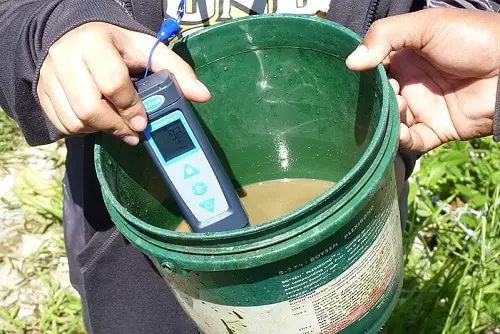
Maintaining A Balanced pH Level
In case, if you don’t know how to maintain ph balance in hydroponics, then consider the following solution.
You need to always test the pH level of the water with a test kit like a liquid pH kit or litmus test stripes. Plus, you can also use a digital pH meter to test the pH level accurately, but they are quite expensive.
After mixing the nutrients into the water, check the pH level again after one hour. If the pH level is high, then add phosphoric acid aka “pH down” to the nutrient solution, and if it is low, then add potassium hydroxide, which is “pH up”.
If you are using tap water, then you might need to adjust the nutrient strength according to the pH level of the water. In the first few days, you might face huge fluctuation in the pH levels, but once you learn how to adjust pH in hydroponics, then it will become easier for you to maintain a balanced pH level.
How to Lower pH in Hydroponics?
If hydroponics pH too high, the plants become unable to absorb necessary amount of nutrients. In general, the expected pH level is 5.0 to 6.0, and you will need to work to reach that level. The effective pH lowering method may be the following.
- Take a water sample and test them with a pH test strip. The pH test kit is also helpful to determine the pH level.
- To lower the pH level in hydroponic, you need to purchase a pH down product. Test the pH of the nutrient solution with a testing kit according to the product’s manual. If the pH is high, then add a little amount of “pH down” to the solution carefully, and stir it with a stick or a spoon.
- Make sure to use the pH down in smaller quantity to avoid an overdose. After an hour, check the pH level again, and if still, the level doesn’t decrease, then repeat the above process once again.
- You can also use muriatic or sulfuric acid to lower the pH level, but they are quite dangerous and you need to be very careful while using them. Therefore, it is better to use safe products found in the market.
Necessary Items to Lower pH
- pH test strip or Soil pH Test Kit
- pH lowering solution for hydroponic system
- Large spoon or stick
Tips to Follow
- Indoor plants have different preferences to thrive in a variety of pH ranges. Garden plants like lettuce, beans, and broccoli live in between 6.0 and 6.5 pH level. Other houseplants have different choices. Therefore, make sure you adjust pH level according to the plants you grow in hydroponics system.
- If you have several types of plants in your system, ensure an average pH level that works best for each type.
- After adding nutrients, test the pH level. Since nutrients lower the pH level, you may not need to add pH lowering solution to adjust the level in hydroponics system.
- The pH level can be changed frequently in aerated hydroponic systems. You will need to check this type of system regularly. The lopsided pH in a system can damage your plants permanently.
- Muriatic or sulfuric acid is quite effective to reduce pH level but they can be dangerous for plants’ health as well. Due to their corrosive feature, they can harm plant’s different parts where they come in contact. Relatively, the diluted phosphoric acid is safer that comes with minimum risk.
How to Naturally Lower pH in Hydroponics?
Many people suggest using natural ingredients like white vinegar, lemon juice or citric acid to lower the Ph level of the hydroponics system.
But some say these ingredients work only for a short time as they are not as powerful and effective in lowering the Ph than the diluted lowering pH products sold in the market. So, they cannot be used as a permanent solution.
Related Questions
Why does the pH keep rising in my hydroponic system?
The pH in hydroponic systems can rise due to factors such as nutrient uptake, evaporation, and bacterial activity.
How does high pH affect hydroponic plants?
High pH can negatively impact hydroponic plants by inhibiting nutrient availability and causing nutrient deficiencies.
What are the common causes of pH increase in hydroponic nutrient solution?
Common causes of pH increase in hydroponic nutrient solution include nutrient imbalances, inadequate water quality, and poor system maintenance.
How can I prevent pH from rising in my hydroponic setup?
pH can be prevented from rising in hydroponic setups by regularly monitoring and adjusting nutrient solution, using pH buffers, and maintaining proper system hygiene.
What are the recommended pH levels for hydroponic plants?
The recommended pH range for hydroponic plants typically falls between 5.5 to 6.5, depending on the plant species.
Should I adjust pH manually or use an automatic pH dosing system?
Both manual pH adjustments and automatic pH dosing systems can be used to maintain pH in hydroponics, with automatic systems providing more consistent control.
Can using certain types of water or nutrients cause pH to rise in hydroponics?
Yes, using certain types of water with high alkalinity or nutrient solutions with imbalanced pH levels can cause pH to rise in hydroponic systems.
What are the signs of pH imbalance in a hydroponic system?
Signs of pH imbalance in hydroponic systems may include yellowing leaves, nutrient deficiencies, and reduced plant growth.
How often should I monitor and adjust pH in my hydroponic system?
pH should be monitored and adjusted regularly, typically daily or at least several times a week, depending on the system’s size and plant requirements.
Are there any natural remedies or additives to lower pH in hydroponics?
Yes, natural remedies such as using organic acids or acidic additives like citric acid can be used to lower pH in hydroponic systems, but caution should be exercised to avoid overcorrection.
Bottom Line
Many people might not know the importance of the Ph level or don’t take it much seriously. The Ph level is quite a vital factor not only for the hydroponically grown plants but also for soil-based plants too.
If your hydroponics pH keeps rising and if you don’t adjust it at the right time, then the plants will have problems in their growth and structure. Thus, adjusting them to the suitable range is quite necessary, as the right pH level makes the nutrient available for the plants to absorb. I hope this article has helped you in understanding how to lower pH in hydroponics.
